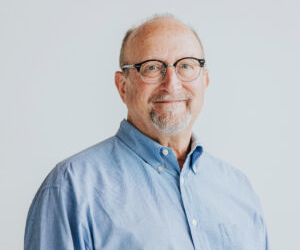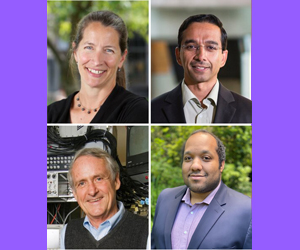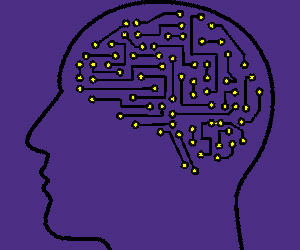Author: Eric Chudler
-
December 2025 Newsletter
University of Washington A CNT Monthly Newsletter December, 2025 Honors and Awards Congratulations to Chary Batista (labs of Steve Perlmutter and Sarah Mondello) and Ali Sadeghi (lab of Christoph Hofstetter) who both received 2025-2027 Weill Neurohub Fellowships. Upcoming Events UW Future Tense,…
-
November 2025 Newsletter
University of Washington A CNT Monthly Newsletter November, 2025 Upcoming Events Neuroscience, AI and Society: Cory Doctorow, December 4, 2025; UW Computational Neuroscience Center, Seattle, WA Neuroethics 2026, April 15-17, 2026; Stanford, CA; Lucca, Italy, Stellenbosch, South Africa CNT…
-
Customizable artificial simulator for developing, planning, and training personnel on neurophysiology and surgical procedures in non-human primates
Authors: Lydia I. Smith and Amy L. Orsborn Publication: Journal of Neuroscience Methods Date: December, 2025 Abstract: BackgroundNeuroscience researchers often surgically implant hardware into model organisms to measure and manipulate neural activity. Designing and optimizing these procedures in non-human primates often requires sedated or euthanized animals. Artificial tissue technologies can reduce animal use in this process, but existing simulators…
-

Tom Daniel Retires from WRF
Tom Daniel, who was the interim director of the CNT/CSNE from 2011 to 2013, has retired as President and CEO of the Washington Research Foundation (WRF). Dr. Orin S. Levine has been appointed as the new WRF President and CEO.
-

Theater of Thought Panel
CNT members Tim Brown, Sara Goering, Eb Fetz and Rajesh Rao will participate on a panel to discuss the mysteries of the human brain and the future of neurotechnology after a screening of Werner Herzog’s documentary, Theater of Thought. Date: November 7, 2025, 6-8 pmLocation: Allen Institute, Seattle WA
-
Temporal basis function models for closed-loop neural stimulation
Authors: Bryan, M.J., Schwock, F., Yazdan-Shahmorad, A. and Rao, R.P.N. Publication: J. Neural Engineering Date: September 16, 2025 Abstract: Objective. Closed-loop neural stimulation provides novel therapies for neurological diseases such as Parkinson’s disease (PD), but it is not yet clear whether artificial intelligence (AI) techniques can tailor closed-loop stimulation to individual patients or identify new…
-
Early intervention with electrical stimulation reduces neural damage after stroke in non-human primates
Authors: Zhou, J., Khateeb, K. and Yazdan-Shahmorad, A. Publication: Nature Communications Date: July 21, 2025 Abstract: For patients experiencing ischemic stroke, acute intervention offers the most critical therapeutic opportunity as it can reduce irreversible tissue injury and improve functional outcomes. However, currently available treatments within the acute window are highly limited and have strict patient…
-

New Neurostimulation Technology
Neurostimulation technology developed by UW CNT members Rajesh Rao, Jeffrey Ojemann, Eb Fetz, Chet Moritz and Jeffrey Herron is now being used by Panaxium Research Inc. to restore lost motor function in people who have suffered a stroke and traumatic brain injury.
-
October 2025 Newsletter
University of Washington A CNT Monthly Newsletter October, 2025 Honors and Awards Congratulations to Ali Alattar, a University of Washington bioengineering undergraduate student in the lab of CNT faculty member Azadeh Yazdan, who received a 2025-2026 Washington…
-
Manipulation of neuronal activity by an artificial spiking neural network implemented on a closed-loop brain-computer interface in non-human primates
Authors: Mishler, J.H., Yun, R., Perlmutter, S., Rao, R.P.N. and Fetz, E.E. Publication: J. Neural Eng. Date: July 21, 2025 Abstract: Objective. Closed-loop brain-computer interfaces can be used to bridge, modulate, or repair damaged connections within the brain to restore functional deficits. Towards this goal, we demonstrate that small artificial spiking neural networks can be…
